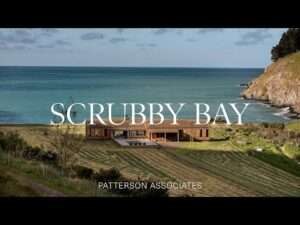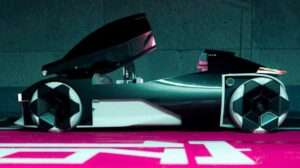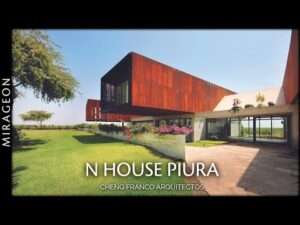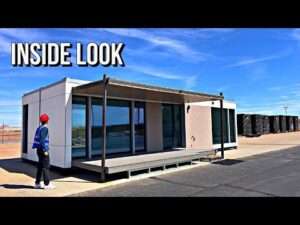Architecture and Design Obsession
Almost Invisible: SANAA’s Minimalistic, Curved Glass Façades
Architects: Find the perfect glazing for your next project through Architizer. Manufacturers: Check out the latest construction leads and sign up now.
When architects Kazuyo Sejima and Ryue Nishizawa, the founders of Tokyo-based Sejima and Nishizawa and Associates (SANAA), were awarded the Pritzker Prize in 2010, the jury lauded their ability to create “architecture that is simultaneously delicate and powerful, precise and fluid, ingenious but not overly or overtly clever.” The pair, trained in the Japanese art of minimalism but eschewing its obsession with crisp angles, have become masters at crafting curvaceous glass buildings whose walls are nearly invisible but whose presence is undeniably felt, as if made of air.
It is a skill they have been developing for decades, working alongside leaders in the glass fabrication industry to design art museums and cultural institutions around the globe. Beginning with their formative works and concluding with their most critically acclaimed project to date, we trace the lineage of SANAA’s adeptly detailed, curved glass façades.
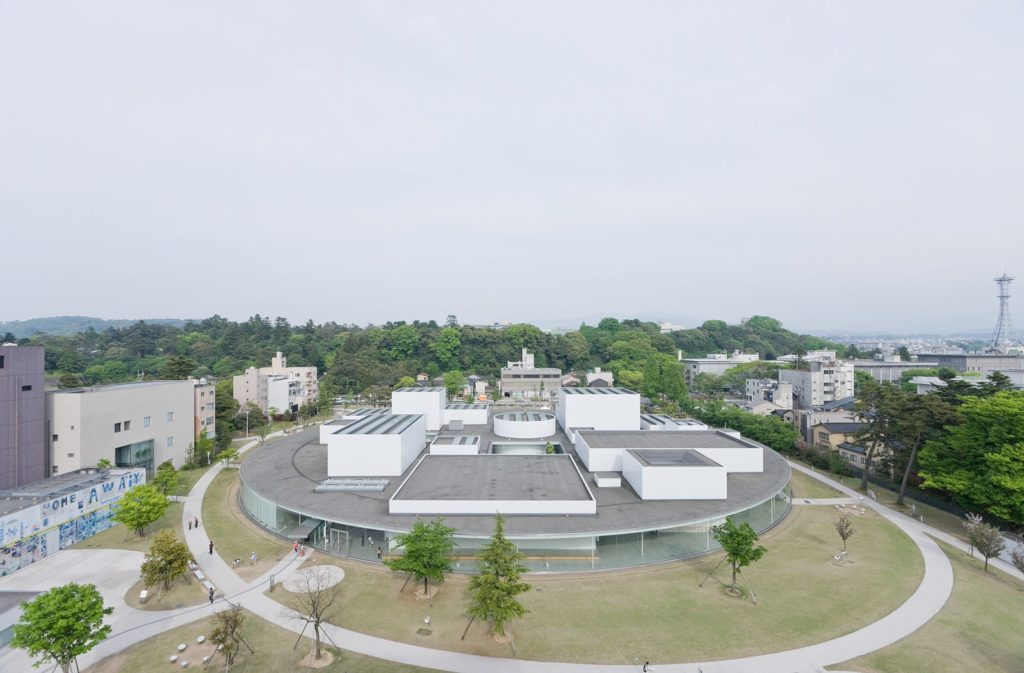
Photo by Iwan Baan; via Archdaily.
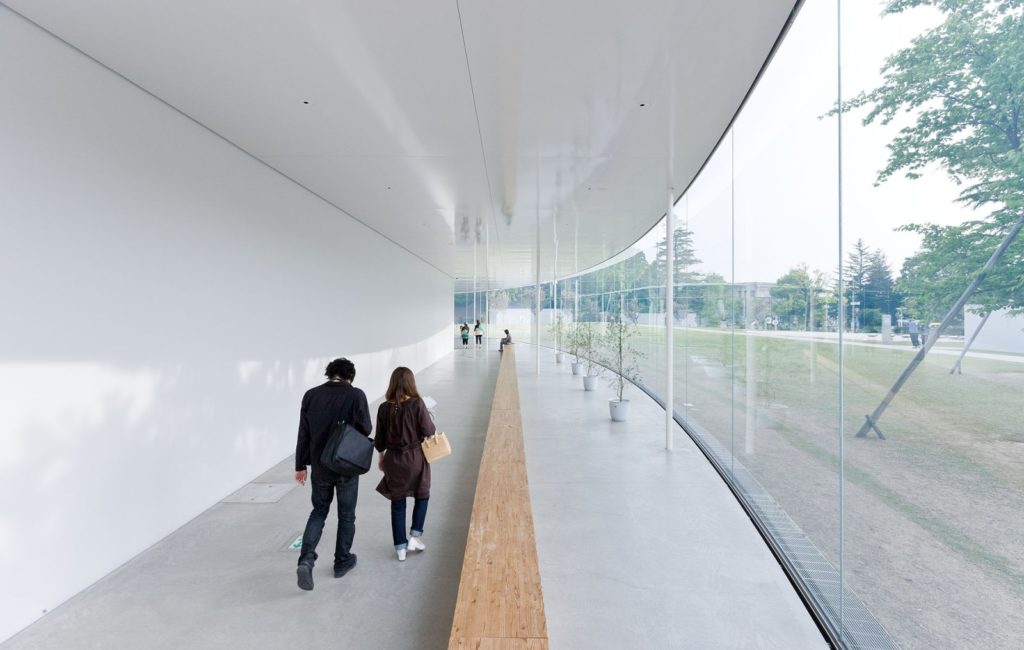
Photo by Iwan Baan; via Archdaily.
21st Century Museum of Contemporary Art by SANAA, Kanazawa, Japan
Curved glass manufactured by Shinko Glass
The 21st Century Museum is a circular building, inscribed in glass and publically accessible from all sides. The interior is organized by white volumes, containing the galleries and ancillary functions, which breach through the main roof like icebergs emerging from a glass ocean.
The curved glazing for the exterior was manufactured through slumping which involves superheating glass to extreme temperatures and letting it fall under its own weight into molds of the desired shape. The curved panels were then cooled very slowly to prevent stress fractures and distortion. Finally, a clear, glass-strengthening film was laminated to the concave surface of the glass, helping the panels achieve their 16-foot heights without the need for additional bracing.
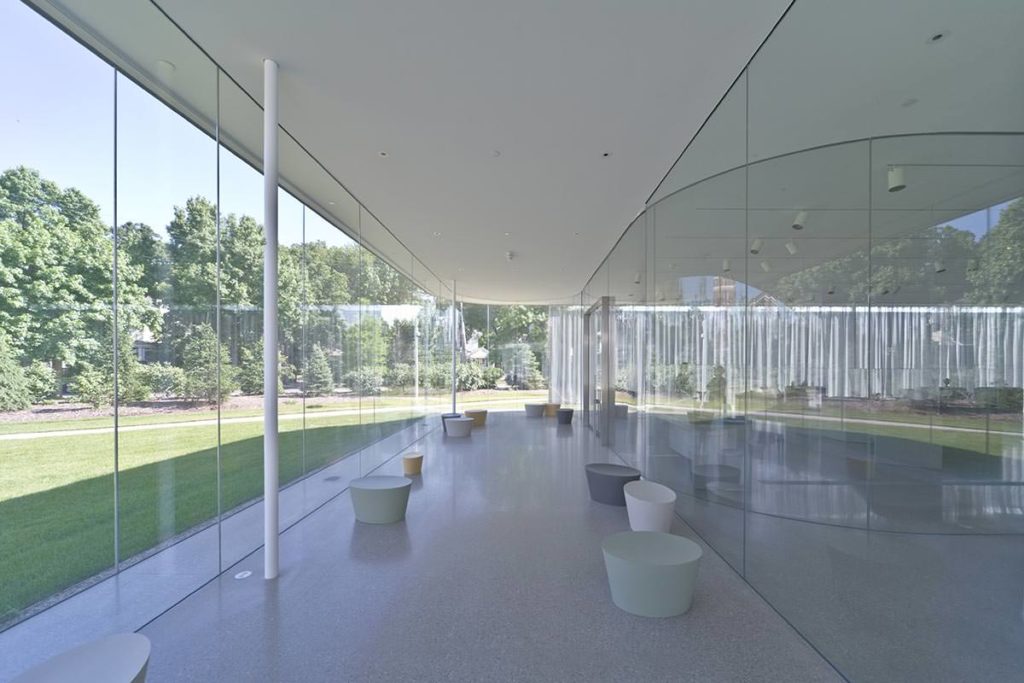
Photo by Floto Warner/OTTO; via Front Inc.
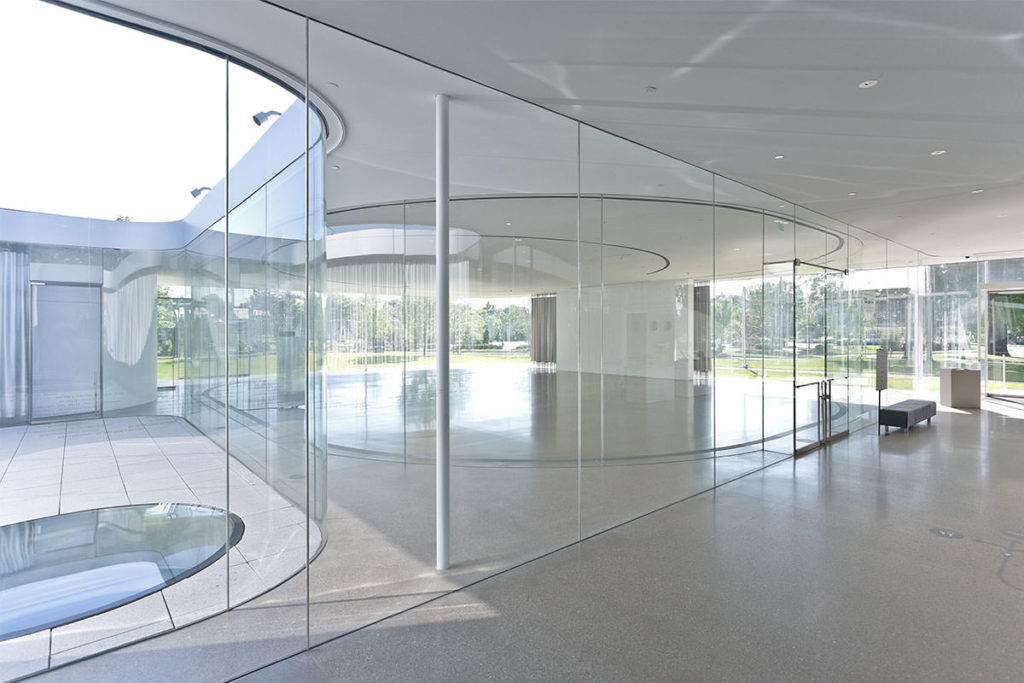
Photo by Floto Warner/OTTO; via Front Inc.
Glass Pavilion at the Toledo Museum of Art by SANAA, Toledo, Ohio, United States
Curved glass manufactured by Pilkington and AVIC Sanxin
SANAA’s next project, fittingly, was a gallery for the Toledo Museum of Art’s extensive glass sculpture collection. Here, the pair continued exploring the idea of galleries within galleries, this time swapping traditional white walls for an impressive, all-glass interior.
For maximum transparency, the architects selected an extra-clear, low-iron glazing. This enabled the ½-inch-thick sheets to be double laminated without taking on the greenish hue associated with thick glass. There are 500 custom-molded pieces in total, each weighing approximately 1,500 pounds. These massive panels were installed, using a special machine, into recessed channels in the floors and ceilings, creating the impression that the glass is limitless.

Photo via Cricursa.
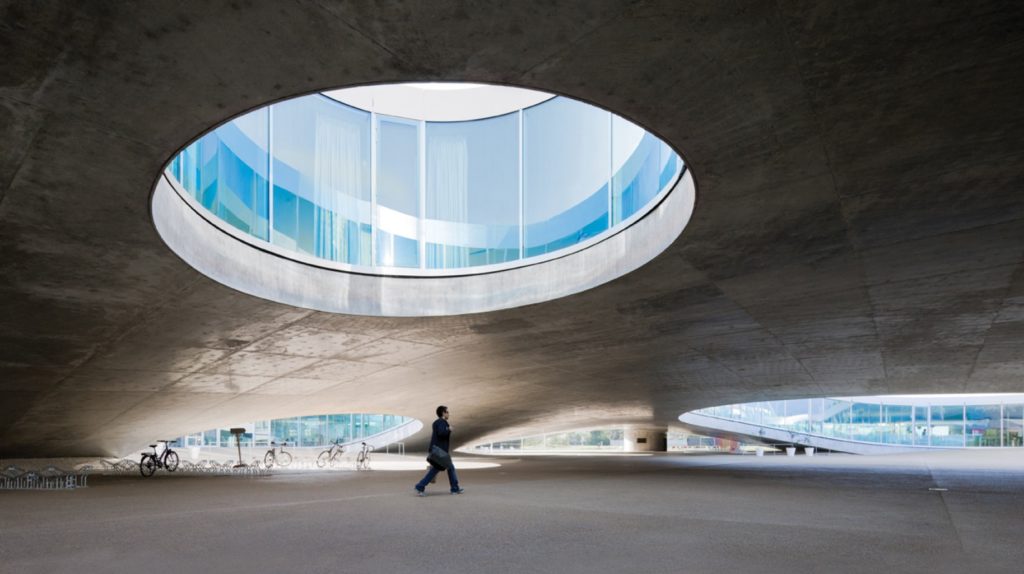
Photo via Cricursa.
Rolex Learning Center by SANAA, Lausanne, Switzerland
Curved glass manufactured by Cricursa
Inspired by the nearby Swiss Alps, the Rolex Learning Center occupies a rolling floor plate that lifts and dives to create a variety of exhibition and public spaces. The interior is perforated by over a dozen rounded courtyards which bring daylight deep into the building without disrupting the flow of space.
There is over 51,000-square-feet of glazing cladding the exterior. The complication here was not fabricating the curved glass — since SANAA was working with glass bending specialist Cricursa — but installing the glass against the undulant concrete structure. Every unit had to be individually cut to fit precisely between the roof and floor slabs. Additionally, to accommodate the movement of the concrete, the glazing had to be installed in flexible, jointed frames which enable each unit to move independently.
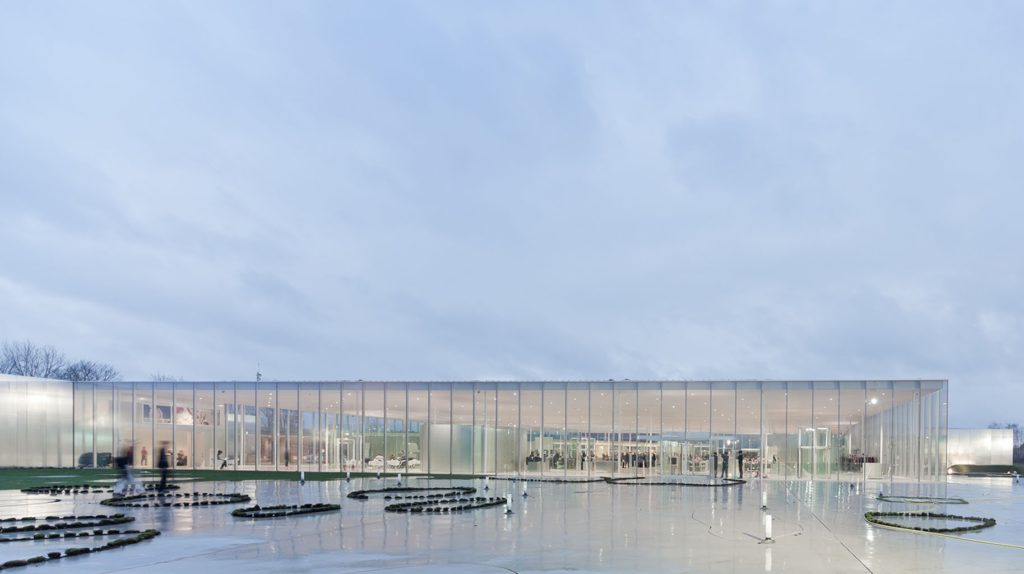
Photo via Cricursa.

Photo via Cricursa.
Louvre Lens by SANAA, Lens, France
Curved glass manufactured by Cricursa
The Louvre Lens, an annex to the Louvre museum in Paris, comprises five rectilinear galleries, clad in flat glazing and polished aluminum, with curvilinear glass interiors. The juxtaposition of planar, curved, transparent and mirrored surfaces creates a kaleidoscopic experience, simultaneously framing and reflecting views of the surrounding parkland.
The exterior glazing is set in front of the roof soffit, allowing it to extend the full height of the building, and is supported by ultrathin, polished aluminum mullions. In comparison, the curved interior glazing is frameless, held together instead by polished aluminum clips and transparent silicone joints. Unlike SANAA’s earlier projects, which relied on slumping, these curved elements where fabricated using a fast bending process wherein glass is bent to the required radius by computerized rollers, making costly molds unnecessary.
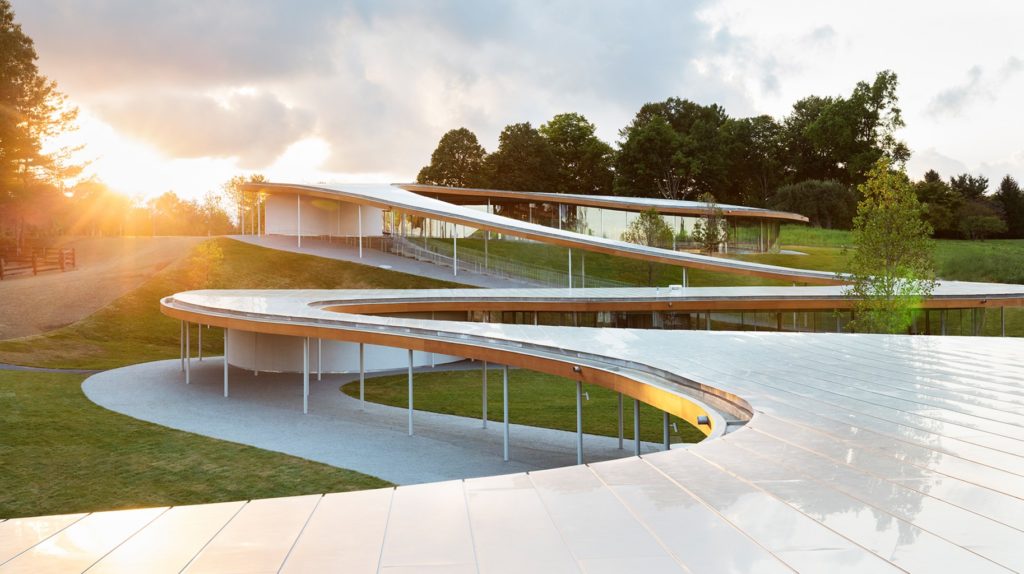
Photo by Dean Kaufman; via Archdaily.

Photo by Dean Kaufman; via Archdaily.
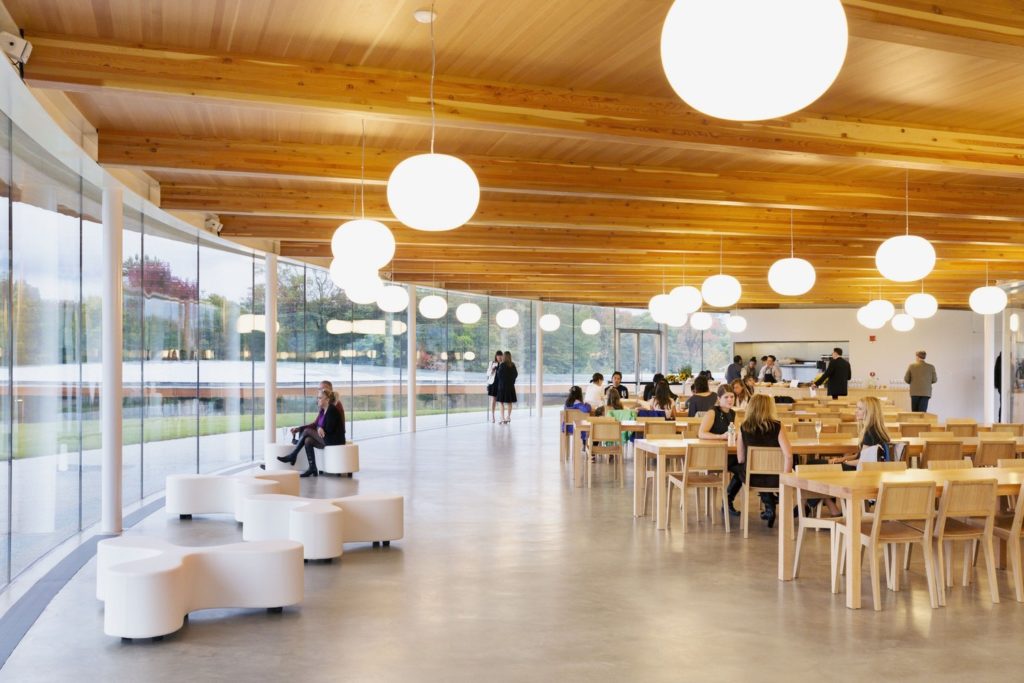
Photo by Dean Kaufman; via Archdaily.
Grace Farms by SANAA, New Canaan, Conn., United States
Curved glass manufactured by Cricursa
Situated on a gorgeous, 80-acre site in Connecticut, this arts and culture center meanders through the landscape like a river. The serpentine canopy is enclosed in some places and open in others, relying on curved glazing to blur the boundary between interior and exterior. The façades consist of 203 uniquely curved pieces of glass which are installed, without mullions, in a horizontal channel using beads of structural silicone. To keep the interior comfortable, the architects specified a unitized system of double-glazed insulating units with low emissivity coatings. These factory sealed units ensure that the cavity between panes remains air-tight and free of unsightly contaminants.
The resulting façade is as beautiful as it is efficient which is no small feat when dealing with curved glazing. As Ferran Figuerola of Cricursa explained: “The more features you ask for, the more difficult glass is to bend, and here it was necessary to combine low emissivity with high insulation … What we do, as the industry introduces these advancements for flat, is see what we have to do to also achieve it in curved glass. This proactive attitude leads us to advance before the project arrives so when [SANAA] asks us if we can do it, we can say yes.”
Search for Curved Glass Manufacturers
Search for the best curved glazing through Architizer: Click here to sign up now. Are you a glazing manufacturer looking to connect with architects? Click here.
